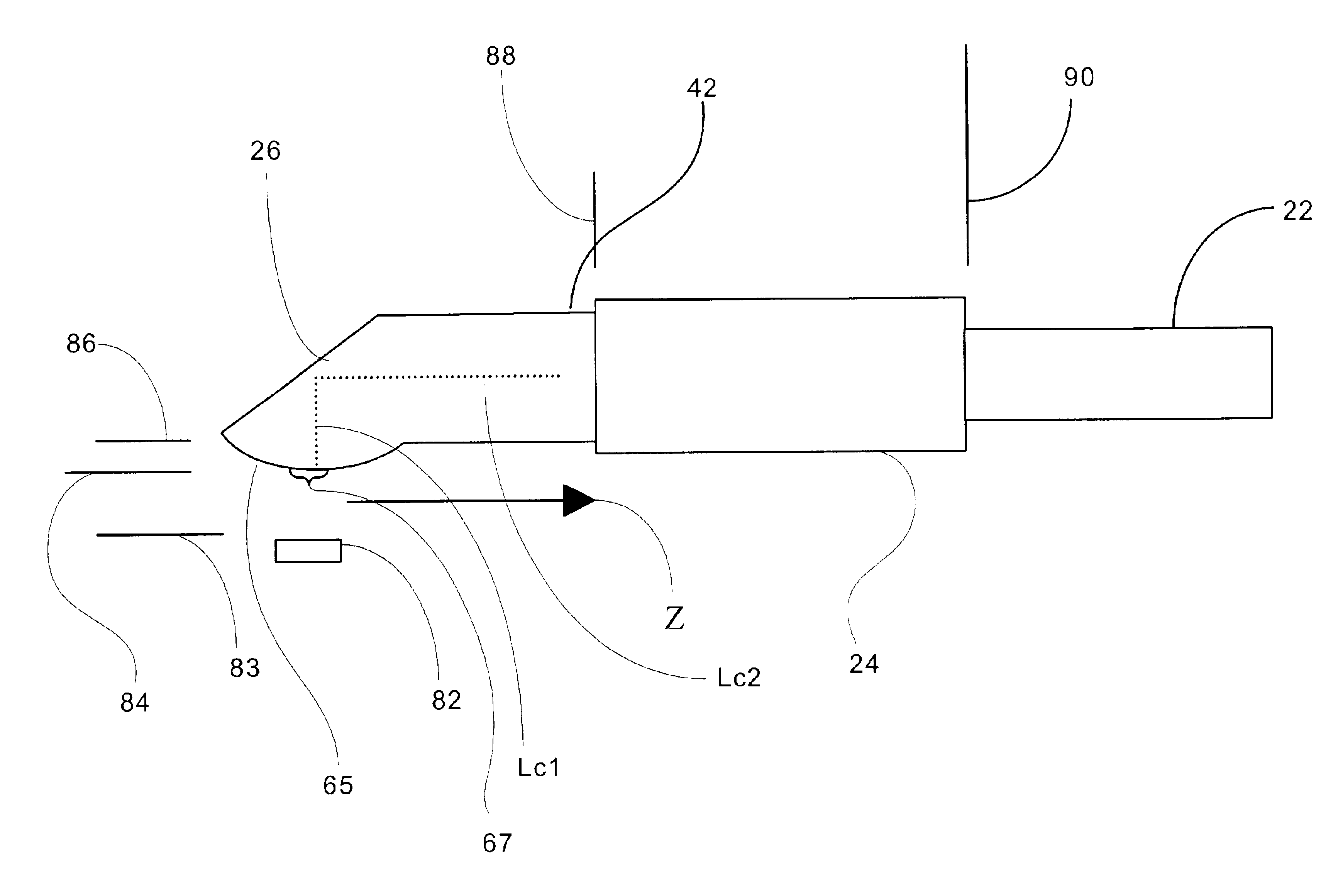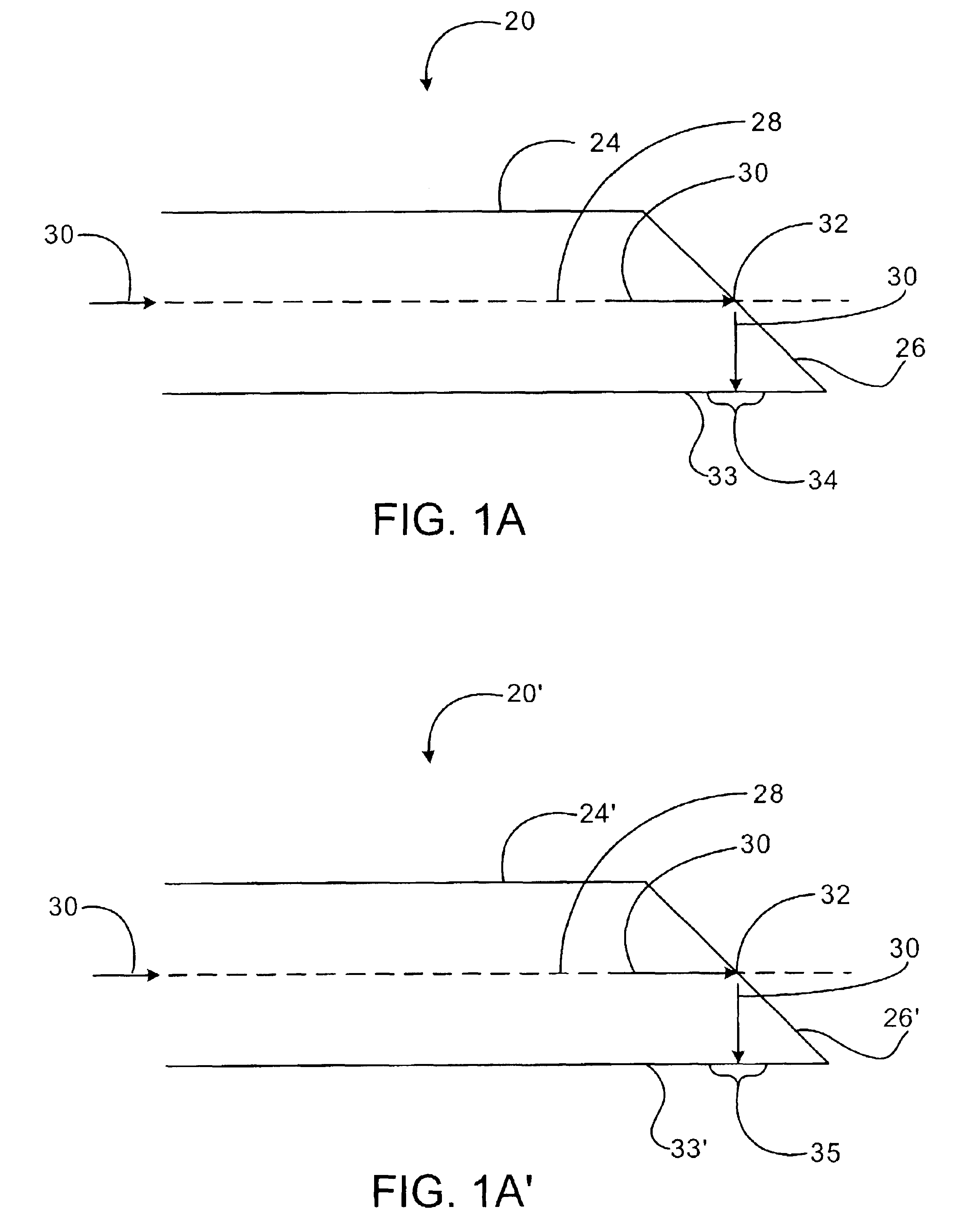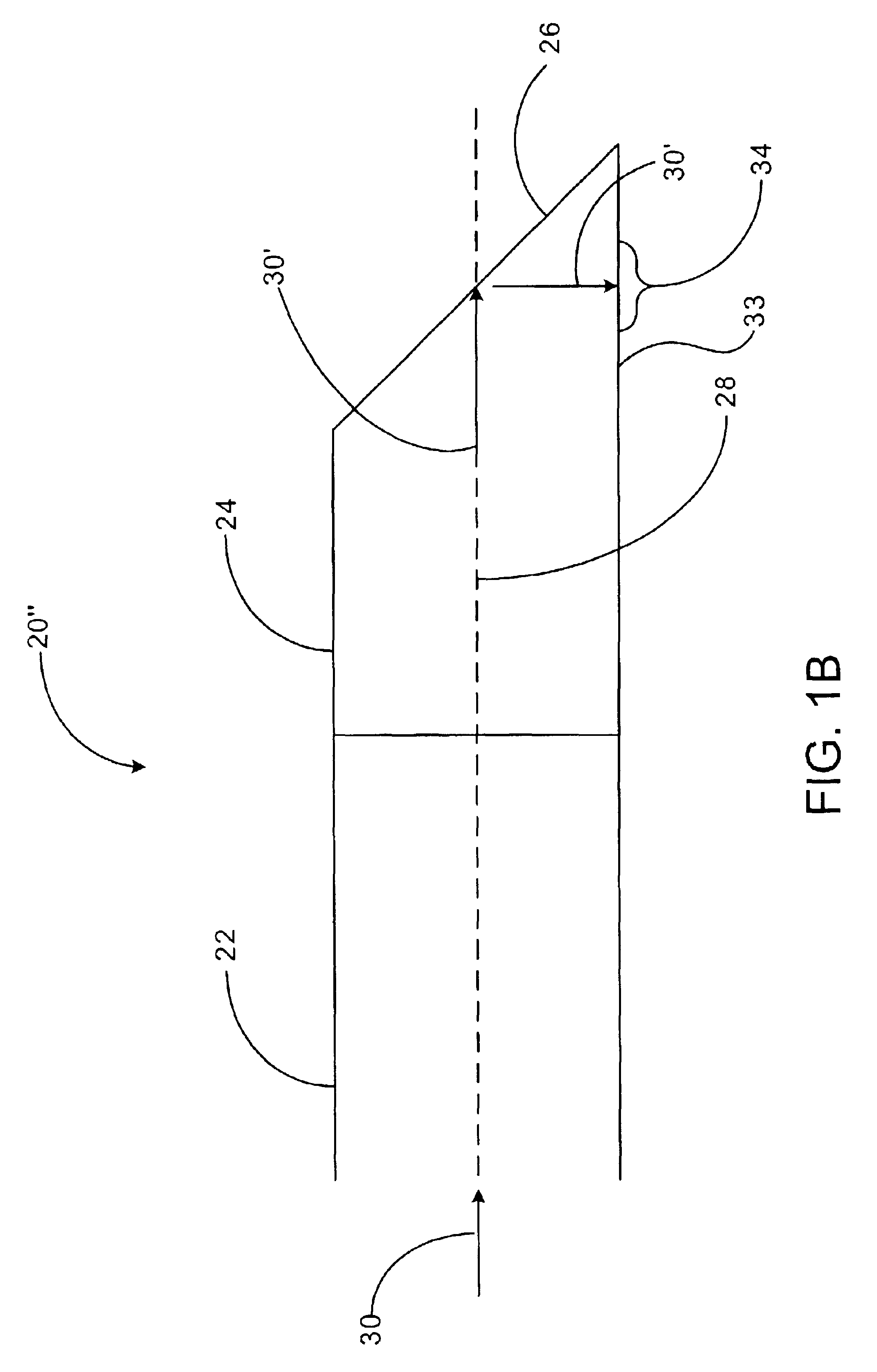Beam bending apparatus and method of manufacture
a beam bending and beam technology, applied in the field of optical devices, can solve the problems of index gradients produced by ion exchange processes that are time-consuming and expensive, refraction at these surfaces, and each approach has its own limitations, so as to facilitate mass manufacturing, facilitate mass manufacturing, and uniform refractive index
- Summary
- Abstract
- Description
- Claims
- Application Information
AI Technical Summary
Benefits of technology
Problems solved by technology
Method used
Image
Examples
example
[0080]An example of an off-line or non-in-line beam bending apparatus and optical assembly in accordance with the above-mentioned embodiments of the present invention will now be described.
[0081]An exemplary off-line beam bending apparatus 80, including a ball lens 65 having a biconic curved surface 67 and a beveled reflective surface 26, is shown schematically in FIG. 8 with reference to the variables described below. The exemplary multi-lens apparatus includes a source 82 of an optical signal, in this case a laser diode capable of emitting a signal at an operating wavelength ‘wav’; Mode-field-diameter (MFD) in the x-direction (vertical direction) of wx0 (μm), and MFD in the y-direction of wy0 (μm). The beam from the source 82 propagates through a medium (most commonly air) of index (n1) for a distance (z) before falling on a curved surface 67 with radii of curvature of (RLx) (μm) in the x-direction and (Rly) (μm) in the y-direction that is formed on a spacer rod 42 having a radial...
PUM
 Login to View More
Login to View More Abstract
Description
Claims
Application Information
 Login to View More
Login to View More - R&D
- Intellectual Property
- Life Sciences
- Materials
- Tech Scout
- Unparalleled Data Quality
- Higher Quality Content
- 60% Fewer Hallucinations
Browse by: Latest US Patents, China's latest patents, Technical Efficacy Thesaurus, Application Domain, Technology Topic, Popular Technical Reports.
© 2025 PatSnap. All rights reserved.Legal|Privacy policy|Modern Slavery Act Transparency Statement|Sitemap|About US| Contact US: help@patsnap.com



